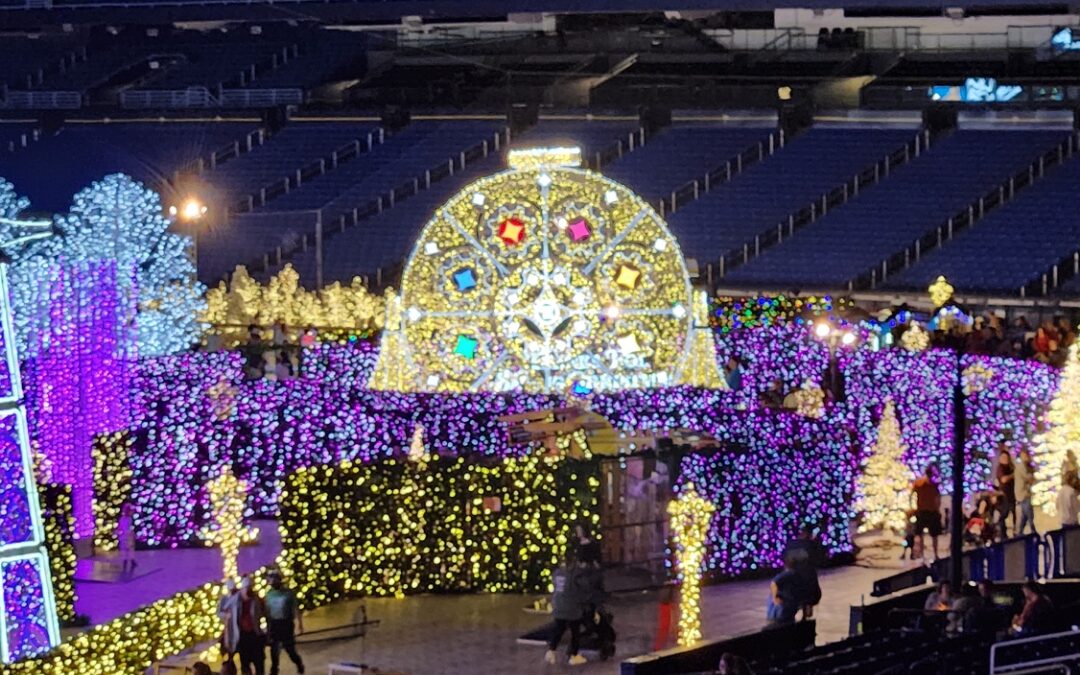When my partner Ernest and I started out as a young family we didn’t have a lot of storage space. We began celebrating together in the early 90’s. We had a few decorations and lights, and not much else. Some years we added a Christmas tree but that was our annual decoration bonanza.
As our family matured and expanded into more space, the “Christmas Box” didn’t seem to grow in kind. It contained the same old lights, a few pretty candles and plates, and my old velvet Santa Claus doll that has a gift pouch on his back. When I was little my mom used to put Hersey kisses in there. They never lasted long.
I inherited the term “Christmas Box” from a beautiful, brilliant and kind friend. She likes Hersey kisses too! But the first time she heard me say anything about getting the “Christmas Box” out for the holidays, she laughed wildly: “Really? A Christmas box? A whole box? Don’t overdo it!”
As I think about the “Christmas Box” I realize that it has a lot in common with the “Emotions Box” and reminds me of how I tend to compartmentalize my emotions (and I don’t think I am alone!) Each November, I remember that there’s an “Emotions Box” downstairs parading as a “Christmas Box” just waiting to be opened, perused and survived.
Like the “Christmas Box”, my “Emotions Box” was always in disarray, frantically stuffed with old memorabilia and mixed emotions that have not yet been checked. They both looked like sad versions of a packed and repacked suitcase at the end of a long journey: The kind of suitcase where there is no longer any organization and the dirty clothes bag has been mixed in with the few clean items that remain. Not to mention there is something leaking from the toiletry bag. The goal is to get every darn item in that suitcase, close it up and get safely back home. Or in the case of the “Emotions Box” get it locked up tightly and securely until next year.
The contents of the “Emotions Box” were basic: Happiness, Pain, Gratitude and Grief. Nothing fancy. I didn’t usually take all emotions out for the holidays. Some seasons I would try to go heavy on the “Happiness” emotion and ignore the others. Other times the “Pain” emotions have been so overwhelming there was no room for anything else. It never seemed as though I could completely unpack either box. What was going on?
Grief is so tricky and we rarely give it the respect it genuinely deserves. The swirl of unsettling emotions comes in so many different forms to tussle with. Holidays only exacerbate the confusion of grief and the undeniable fact that our loved one is gone. And in my case that means two of my loved ones, two of my children have died.
Decorations and emotions are distinctly separate from one another. The first are simple and commercialized. The latter are complex and intimate. Although packing away the “Christmas Box” post season is a reasonable thing to do in early January, packing my grief back into the “Emotions Box” is definitely not. And I don’t recommend it.
For one thing, we don’t experience grief the same way during the “holidays” as we do the rest of the year. This means we likely have some left over processing to do before sequestering our deepest feelings down to the basement along with the holiday decorations.
Second, if we can’t find a way to stop moving and reflect back on what has transpired over the last ten weeks, we risk missing all that we successfully avoided when we were numbing with _____ (insert favorite anesthesia here). Things happened when we were white knuckling our way through. Some good things, and maybe some bad? But either way if we weren’t fully present, we missed them.
I understand the desire to sleep through the annual “Pain-On-Steroids” dynamic that arises with seasonal music, traditions, family and festivities. So if we did a little white knuckling, and we survived, its a tool that can be used in the short term. But it is not safe for us to sleep forever. We would risk completely missing the flow of life’s energy and experiences. And if we (eventually) don’t manage our pain, it will manage us.
Understanding this conceptually is one thing. But allowing yourself to get fully still for even a minute is one of the most courageous and intimidating things we can endeavor to do. But we must. Because stillness is the host of healing. That’s not only where the pain lives, its also where healing is born and can grow and thrive.
Any chance you are afraid of getting still? Feel intimidated by what may await? Feel like you already know what’s there, and maybe even that you’ve already dealt with it, even though you haven’t stopped moving since your loved one died? You are not alone. I/we get it. But grief is a free fall, a sky dive that can go on for years, decades even. I wouldn’t ask you to muster up that much courage unless I could confidently say that stillness holds the key to emotional freedom.
So how do we get still?
- Turn off electronics and noise (to the extent that you can)
- Sit comfortably with an straight spine
- Gently close your eyes
- Breathe
That’s it. If you can tolerate a whole minute of nothing but closing your eyes and breathing, start there. If fifteen seconds is your current limit, then start there. But get still regularly with whatever fits you personally. Once the practice has been established you can expand the time incrementally. One minute of sitting still a morning, turns into one and a half minutes, turns into five minutes and so on. And since it appears that you and I have both survived another holiday emotional blizzard (PHEW) January is a great time to try something new that is also good for us.
And don’t take my word for it. See for yourself how sitting still for even one minute a day, every day, consistently and at the same time, can change the way you experience life.
As we pack the holidays back into boxes until next season, let’s make sure we are not packing away emotions or issues that are screaming for our attention. When we put the lid on either box, we miss the chance to evolve and gain any learning or new perspective that might have been floating around. Plus we have the added bonus that those same emotions and issues we pack away will be waiting for us when we return in ten months. And they are likely to be pissed.
If you or anyone you know would like to talk about installing a personal meditation practice, please set up a complimentary appointment in my calendar found here: https://lisamcfarland.com/collaborate/ I am passionate about meditation and always happy to help get you fired up!


## Comment SPAM Protection: Shield – provided by WP Support Plan marked this comment as “Pending Moderation”. Reason: Human SPAM filter found “whoiscall” in “url” ##
Thank you!